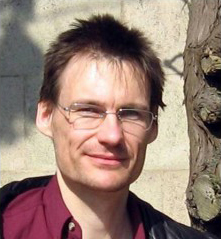Professor Sascha Vongehr
Sascha Vongehr, Ph.D. is Assistant Professor / Research Fellow at National Laboratory of Solid-State Microstructures, College of Engineering and Applied Sciences, Nanjing University.
Sascha studied philosophy, mathematics, chemistry, and physics in Germany, obtained a B.S. degree in theoretical physics (electromagnetism) and M.S. degree (string theory) at Sussex University, UK, and subsequently researched quantum gravity (black holes, two-time theory) at the University of Southern California (USC), Los Angeles, CA, USA. His Ph.D. degree from the University of Southern California, in 2005, is on nanotechnology experiments and statistics of nontrivial cluster size distributions.
He completed postdoctoral positions in neuroscience of the visual system at the USC Psychology Department in 2006, in nanotechnology and cosmology at Nanjing University Physics Department in 2010, and in philosophy of science and modern physics at the Nanjing University Philosophy Department in 2012.
Sascha has mainly published in the field of nanotechnology and is currently officially affiliated with the National Laboratory of Solid State Microstructures of Nanjing University as Research Fellow, nonteaching faculty. His scientific outreach efforts to further the public understanding of science include a science column on Science 2.0 where he has become a featured author.
Sascha authored Global Suicide: No Singularity, Just Evolution of Deadly Rationality, Examples of Black Holes in Two-Time Physics, Quantum Randi Challenge (and Didactic Randi Challenges), The Missing Memristor: Novel Nanotechnology or rather new Case Study for the Philosophy and Sociology of Science?, and Many Worlds Model resolving the Einstein Podolsky Rosen paradox via a Direct Realism to Modal Realism Transition that preserves Einstein Locality, and coauthored Ag Dendrite-Based Au/Ag Bimetallic Nanostructures with Strongly Enhanced Catalytic Activity and Work functions, ionization potentials, and in-between: Scaling relations based on the image charge model.
Read his IEET profile, his LinkedIn profile, and his Science 2.0 profile.
